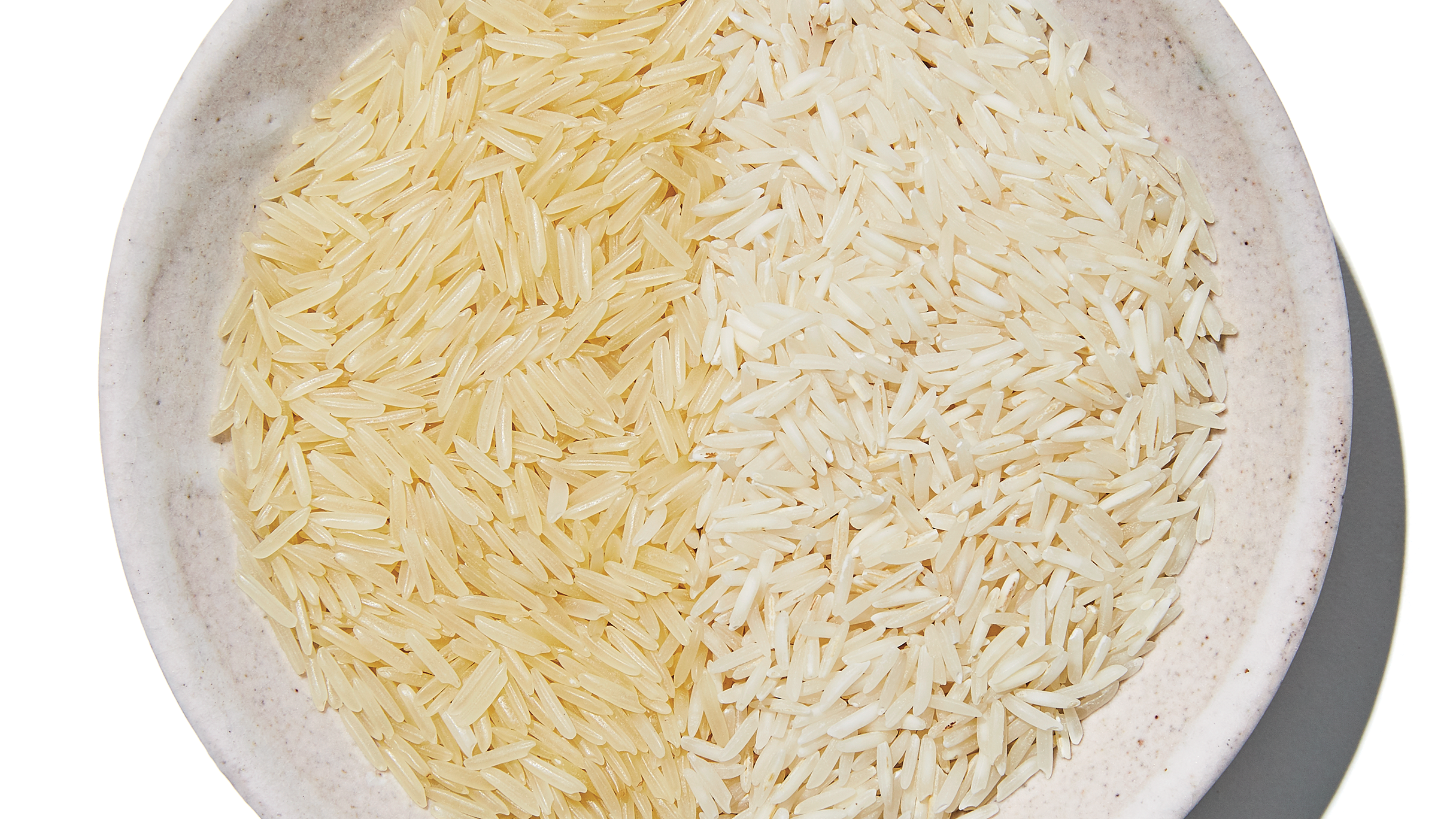Most people know that basmati rice is different. That, somehow, it's fancier than the stuff you're used to. Or maybe rarer? More exclusive? But what is basmati rice, really? Why do we love it with curries and pilafs and braised meats? All right, enough questions. This is what you need to know:
First of All, There Are Different Kinds of Rice
Rice is not a one-size-fits-all scenario, because rice is actually classified in different groups, by size. There’s long-grain, medium-grain, and short-grain rice, and yeah, the names kind of tell you what each of them are. Long-grain rice is long and skinny, and it includes our beloved basmati, as well as rice like jasmine and American long-grain. Medium-grain falls in the middle of both length and width (medium, duh) and includes varieties like Valencia or Arborio (great for paella, risotto, or just straight-up with a bit of butter, salt, and chopped herbs). And short-grain varieties, like sushi rice or American brown rice, are short, squat, and produce a stickier finished product.
Where Does Basmati Rice Come From?
There are many countries that grow basmati rice domestically, but it was originally cultivated and grown in India and Pakistan. Of the two, India accounts for about two-thirds of the global supply. This origin is the strong link to basmati rice and its identity to a side for your favorite curry dish.
How Does It Smell? What Does It Taste Like? What’s It Good For?
Basmati comes from the Hindi word for “fragrant,” and fittingly so. Basmati rice is all about the flavor and aroma, which is intensely spicy, nutty, and floral (compared to other rice that is, not hot sauce or cashews or like, actual flowers). The textural value lies in the fact that the long grains remain individual, non-sticky grains, allowing curry and other sauces to coat each grain for maximum flavor. And yeah, like we said, long-grain rice is perfect as sides for saucy dishes or the base of a pilaf.
How Do I Buy the Good Stuff? What Do I Look For?
Packaging: Good basmati doesn’t come in a plastic bag. Look for cloth packaging, labeled with “extra-long grain,” for that high-quality grain action.
Shape: The longer the basmati grain, the better it is. Another important sign is a slightly tapered end of the grain. Basmati grains should never be flat along the sides.
Color: The best basmati rice isn’t pearly white—the grains will have a slightly golden hue, but shouldn’t be gray. That's because quality basmati rice is actually aged, sometimes for as much as a few years, which helps to dry the rice fully and keep those grains fluffy and separated in a pilaf.

